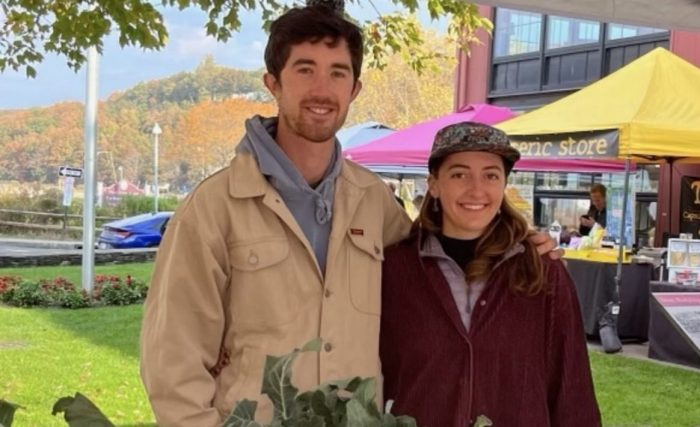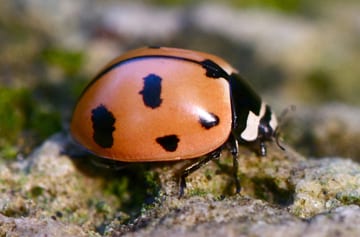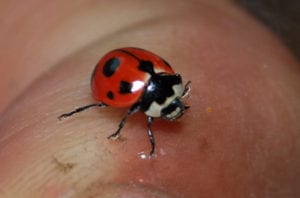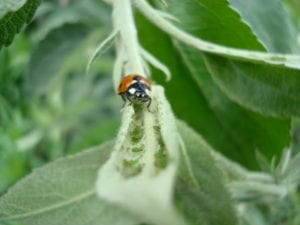By Lynn Hallarman
Here’s why supporting Long Island food producers is more important than ever.
It is a Sunday morning in July, about 5 a.m., and the birds are quiet. Andie Fortier and James Burke are loading their truck with a bounty of vegetables they harvested the day before. The drive from their 3-acre farm in Amagansett to the Village of Port Jefferson is about an hour fifteen this time of day. The weather is iffy, but Andie knows the regulars will show up, making the trip worthwhile.
Packed up, Andie hops in the truck and heads to the market. James stays behind on the farm because there is too much work for both of them to spend a whole day selling.
By the time Andie arrives at Harborfront Park around 7:15 a.m., several vendors in vans are already lined up along the circular drive at the park’s entrance, taking turns unloading their goods. Some are busy setting up plywood tables on stacks of crates, hanging signs or filling buckets with water for flowers. Others are grabbing a quick cup of coffee, breakfast or helping another seller set up their tent. Andie’s mother and a friend are there, waiting on a designated grassy spot overlooking the harbor to help with the setup. Later, when the market starts, they will pitch in to serve customers while Andie keeps the stand piled with fresh fare from the July harvest.
Fortier and Burke feel lucky to have landed a spot at Port Jefferson Farmers Market in 2020. On the South Fork where they work their 3 acres, getting into a market can take years. For their small startup, Sand & Soil, now in its fifth year, competing with roadside farm stands and established growers with a large, loyal customer base can be challenging — sometimes even impossible.
Vital part of community life
Eighteen years ago, Port Jefferson Farmers Market was established by the Economic Development Council under former Mayor Margot Garant. Since then, it has become a vital part of the village’s community life, now featuring around 42 vendors. These include three vegetable farmers, flower farmers, a herb farmer, honey producers, a cheese maker, meat and fish vendors along with a host of local food artisans. To qualify as a vendor, all items must be grown, gathered or processed on Long Island.
Port Jefferson village tapped into a growing trend of using farmers markets to strengthen ties between residents, agricultural communities and local businesses. Nationally, the number of registered markets in the USDA Farmers Market Directory, has risen from 2,000 in 1994 to 8,600 today. Farmers markets are increasingly used as a strategy to create walkable community hubs for all ages, bring fresh produce into urban environments and draw people to local business centers.

New farmers
Sand & Soil’s success at the Port Jeff market highlights the promise of the Farms for the Future Program, launched by the Peconic Land Trust in 2009. This program provides affordable land leases and technical support to new farmers, with the goal of creating the next generation of Long Island farmers.
“Fortier and Burke started farming with 1 acre as part of our incubator program. They are our superstars on the South Fork,” said Dan Heston, director of agricultural programs at the trust and leader of Farms for the Future.
According to Heston, farmers markets are the best way for new farmers who can’t afford their own land to get their footing in the Island’s grower community. These markets allow them to build a loyal customer base, with people returning weekly to fill a bag with freshly harvested vegetables.
However, Heston explained that the quality of farmers markets can vary significantly.
“Some of them are a whole lot better than others,” he said.
Most importantly, he added, “Farmers markets have to have farmers.”
Connecting with the farming community
Fortier and Burke remain loyal to the Port Jeff market even though they also sell at Springs Market in East Hampton and the Montauk Farmers Market. For one thing, they grew up in Port Jefferson where the parents of both of them still live, keeping connected to the community. However, the main reason they stay is the atmosphere of the market.
“People out where we live are always questioning why we still bother to drive to Port Jeff, but this is our best market — we love the comradery with other vendors and the customers are enthusiastic. They want to learn about our organic farming technique,” Burke said.
Ask any regular why they come back to the market week after week, they usually mention the relationships they’ve built with specific vendors.
“It is part of our Sunday routine,” Susan Raynock from Rocky Point said. “We go to church, get coffee and then walk around the market.” Sometimes, Raynock and her friends will have lunch in the village afterward.
Fortier and Burke are happy to answer questions from customers about their products. They want people to know that everything they see on the stand has been grown on their property and picked by them, usually the day before the market.
Melissa Dunstatter, the market’s longtime manager and herself a vendor, sees the farmers market as an incubator for local businesses. She points to several food entrepreneurs in the area that got their start in the Port Jefferson Farmers Market.
“Without the market … our businesses would struggle to be successful,” she said. “It brings people together every week, they look forward to it. And they’re eating better.”









